Have you ever run your fingers through your hair and wondered why it feels so rough?
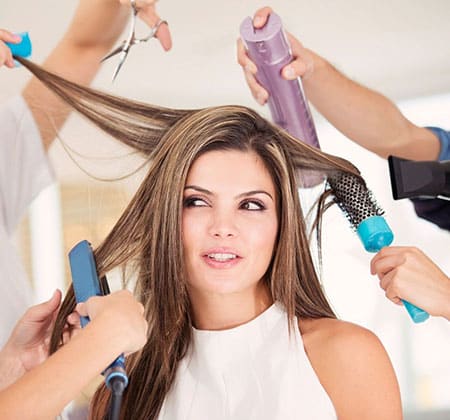
Rough, frizzy, damaged hair is no fun.
And most of the time your styling tool is to be blamed for such hair conditions.
To reduce any hair damage from your most cherished heat styling tool, I have listed some of the most common yet effective ways to use it.
Make sure to also use the Best Straightener for Damaged Hair.
1. Know Your Hair Type and the Heat Level It Can Endure
Every hair type is different and so is their styling requirements.
Before using any styling tool, you must know your hair type in order to minimize the hair damage [1] you would suffer from otherwise.
For example, a flat iron that works phenomenally on thick, natural hair locks won’t do justice to fine/thin tresses and might burn them down almost instantly.
Also, make sure to be aware of the signs of damaged hair from heat, so if it’s there, you can overcome your hair at the first stage.
2. Wait Till Your Tresses Are Fully Dried Before Using Styling Tools
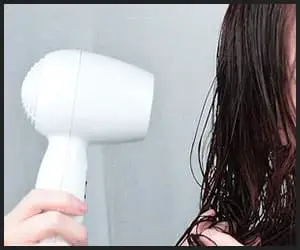
It is totally forbidden to use any heat styling tool, except hair dryer or hot air brushes, on wet hair.
The heat from the straightener plates can literally fry your manes and cause extreme hair breakage.
That’s why its vital to first dry your tresses properly with a hair dryer and then curl or straighten them to maintain hair’s health and good looks.
3. Work Your Way Up From Low Heat Settings
When you are using a hot hair styling tool, especially a flat iron to avoid hair damage, you MUST NOT use the highest heat level in the first try.
Start with a moderate temperature level and see how your manes react to the heat.
Then you can either work your up or down the heat settings according to your styling preference and your hair’s tolerance level.
This is because your hairs are delicate and might get severely damaged if not taken care of correctly.
If you put your hair strands inside the blazing plates of a straightening iron, they might get burnt and suffer from breakage, which eventually will lead to severe hair fall.
READ MORE: How to Use Curved Flat Iron?
4. Try Using a Hot Tool With Ionic Technology
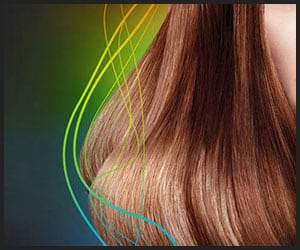
Another way to reduce severe hair damage from heat styling tools is by adopting a tool that comes with the revolutionary ionic technology [2].
This modern-day mechanism uses an ionic generator to release plenty of negative ions to the hairs to not only lock in hair’s natural moisture and nourishment.
At the same time it forms a protective layer over each strand so that excess heat cannot pass through it and harm your precious tresses.
Negative ions minimize heat damage as much as possible and keep your manes healthy, smooth and manageable.
We would suggest you trying this INFINITI PRO BY CONAIR Tourmaline Ceramic Flat Iron to keep your manes safe.
You also need to be well informed of the Least Damaging Hair Styling Tools to use. Also, you need to be updated with your hair status, for which you can do a healthy vs heat damaged hair comparison, so you will be aware of the hair condition.
5. Don’t Forget to Use Heat Protectant
Applying high heat repeatedly to your delicate hair locks evaporates the water molecule from the inner cortex of the hair.
Making the hair extremely dry and frizzy which ultimate results in hair breakage and premature hair fall.
Its important you protect your hair completely before you start applying heat by creating a barrier between your hair and the styling tool.
Doesn’t matter if your hair is wet or dry, a heat protectant is a must apply item in order to minimize heat-related damages as much as possible.
A good quality heat protector also helps to reduce frizz and smooth the cuticle making your hair look silky, soft and manageable.
We prefer this HSI PROFESSIONAL Argan Oil Heat Protector because it provides protection even from the highest heat level.
Be sure to check out: Best Straightener for Frizzy Hair
6. Use the Cool Setting Whenever You Can
The best way to reduce heat damage is to cut down the amount of heat you apply on your hair strands as much as possible.
And one of the best ways to do this is by drying your hair with cool air instead of hot air from a blow dryer.
Alternatively you can learn How to Straighten Hair without Flat Iron to lessen the heat damage.
So, how to skip the hot breeze and use cold air for the drying session?
In recent times, many hairdryers, like this Remington D3190 Damage Protection Hair Dryer, come with a cool shot button alongside their regular hot air settings to provide their users with versatility.
A cool shot button, when pressed, releases a burst of cold air to your hair locks for safe and durable styling.
Drying your hair with cold air might take a bit longer than usual, but it surely would cut down the amount of damage and harm by several notches. throughout the day.
7. Try Using a Microfiber Hair Towel
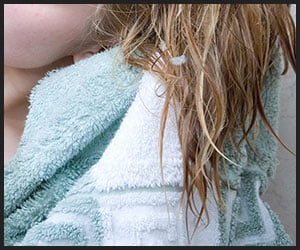
Microfiber hair towels are known to be an excellent absorbent of excess water from your hair.
They soak up all the additional water and wetness from your hair very quickly and help you to achieve slightly damped hair, in just about 10-15 minutes (depending on your hair length and volume).
When you have slightly damped hair, your hair drying time is cut by several notches compared to when your hair is fully wet.
This means that your precious manes are less exposed to dryer heat and are less likely to suffer from heat damages and burns when you dry them with a hairdryer.
Therefore, we can conclude that microfiber towels can reduce heat-related damages.
We would suggest you using this DuraComfort Essentials Super Absorbent Anti-Frizz Microfiber Hair Towel to dry hair quickly.
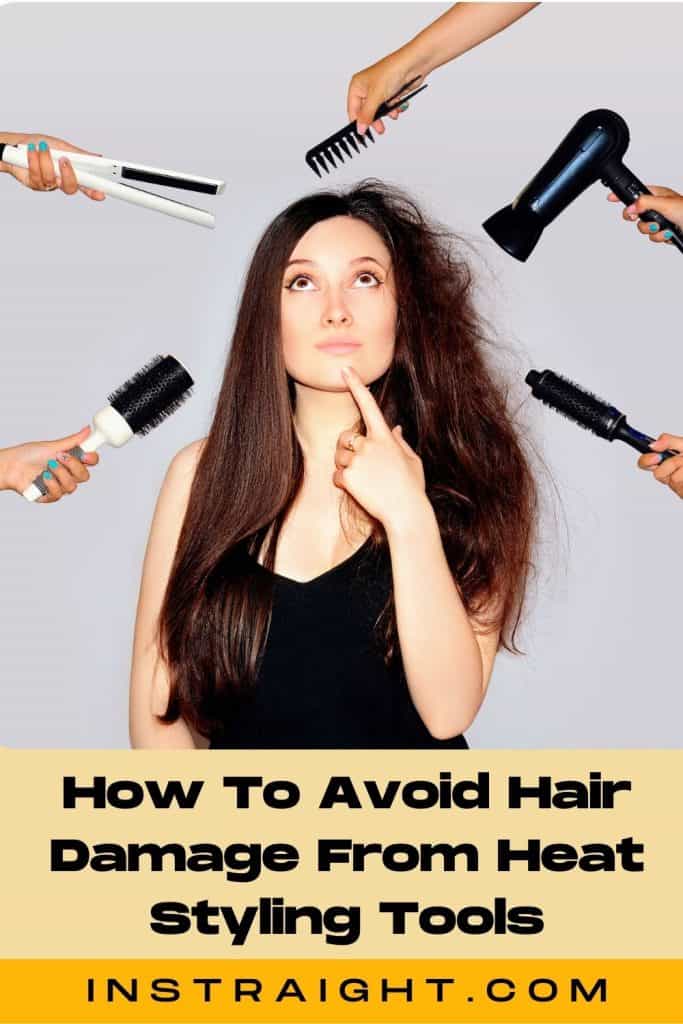
Sources
1. How to Repair Damaged Hair: Common Causes and Treatments [Internet]. Healthline. 2018. Available from: https://www.healthline.com/health/beauty-skin-care/how-to-repair-damaged-hair
2. Nanomaterials Transform Hairstyling Tools originating Technology/nAsA Contribution [Internet]. Available from: https://ntrs.nasa.gov/api/citations/20110000758/downloads/20110000758.pdf?attachment=true
- About the Author
- Latest Posts
Writer and Content Manager at InStraight. Lovella’s philosophy is that everybody’s beauty is merely a reflection of loving yourself . ♀️ She loves to write and discover new cultures. Find her on Facebook


Hi there,
First thing first, this article is awesome. While going through the article, it was very clear that you put a lot of thought and effort into penning this down. It helped me to understand various aspects of hair damages from heat styling tools.
I would like to share a natural tip to reduce heat damage that works for me. I apply a very slight amount of argan oil all over my tresses just before the straightening and it works great for me. You can also try it.
Nevertheless, thank you for writing such an informative and interesting article for your readers!
Keep up the good work.
I wish you success.
Dear Lucille,
First of all, thank you very much for your sweet praise. We are overwhelmed with your kind response.
Secondly, we also thank you for sharing your tip with us. We are confident that our readers will find it useful.
Please keep coming back for more articles in the future.
Hello peeps,
I came here to share my experience. After reading this article, I thought that the usage of microfiber hair towels makes sense, and therefore, I bought one for myself. And, trust me guys, I barely need any heat to dry my hair now. As less heat is applied, my manes look better than before without even trying very hard.
I would recommend it to anyone who is looking to limit hair damage from the heat with minimal effort. Girls go for this.
Dear Patty,
Thank you very much for taking the time and sharing your experience with us. We are sure that our readers will greatly benefit from this.
Please keep coming back for more amazing articles in the future.